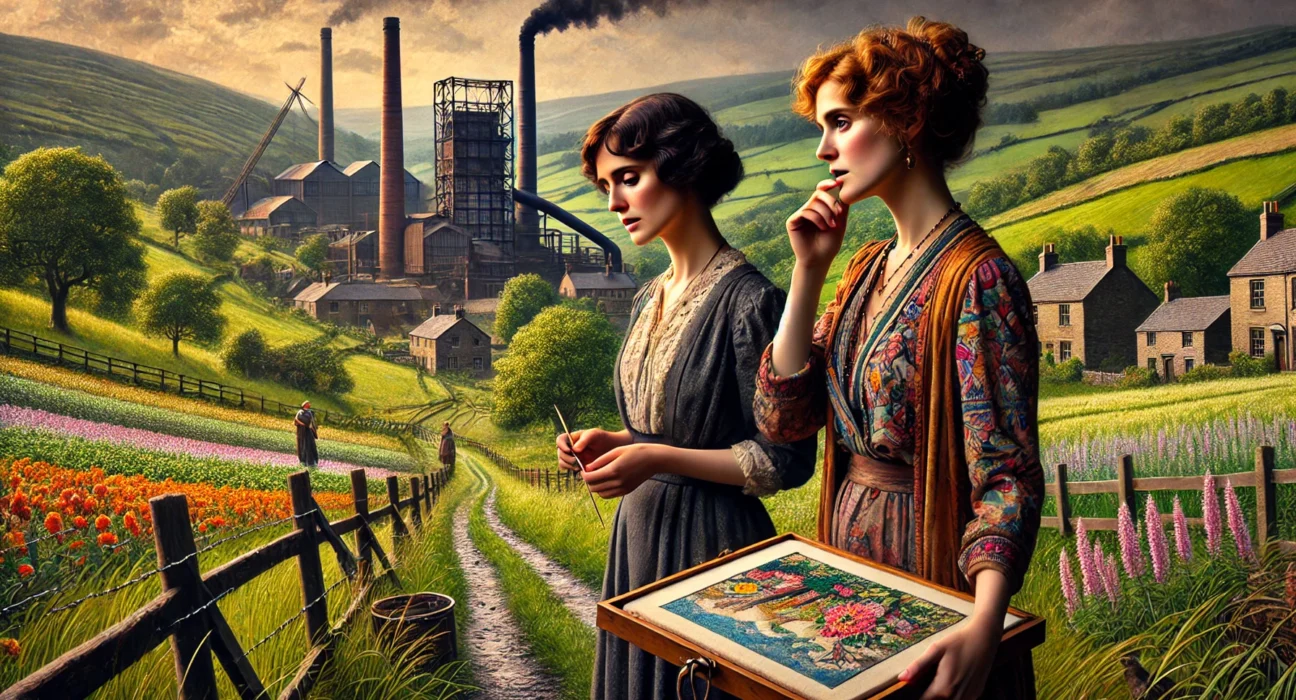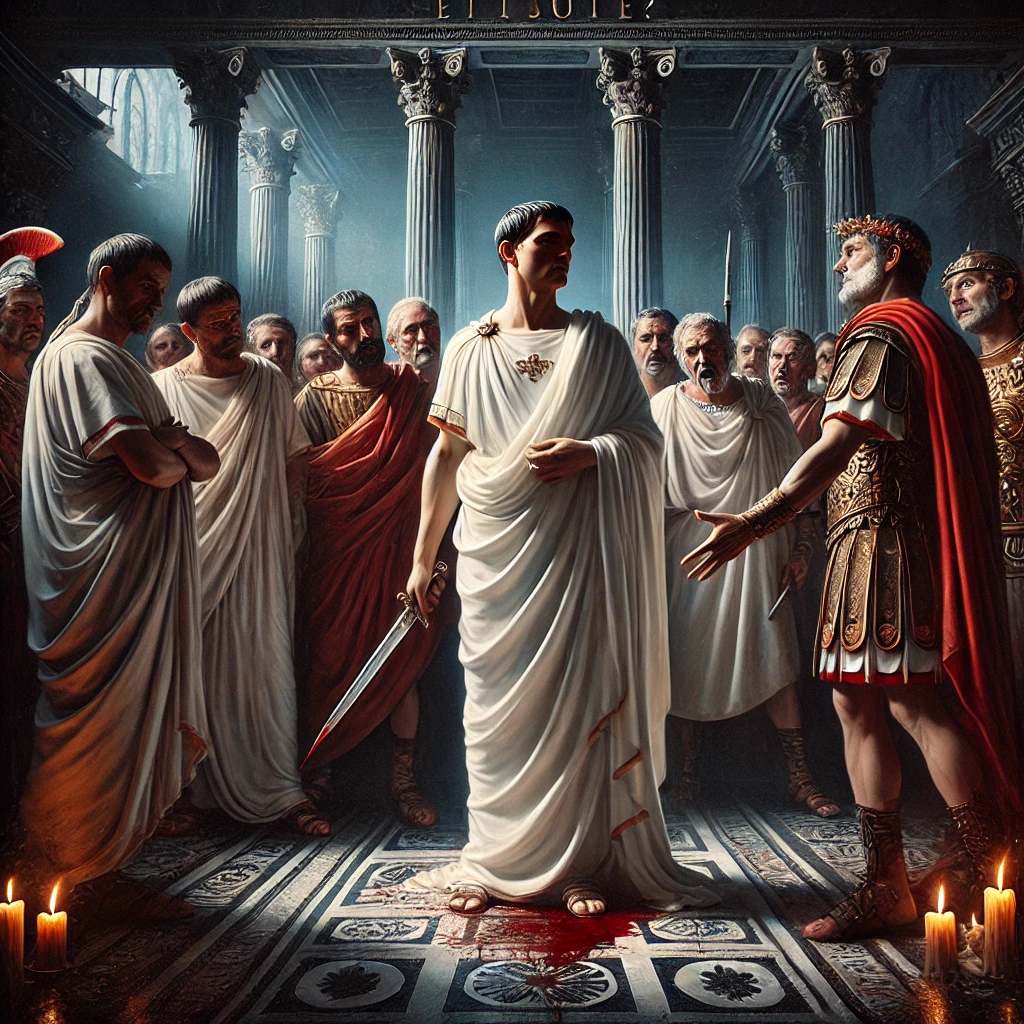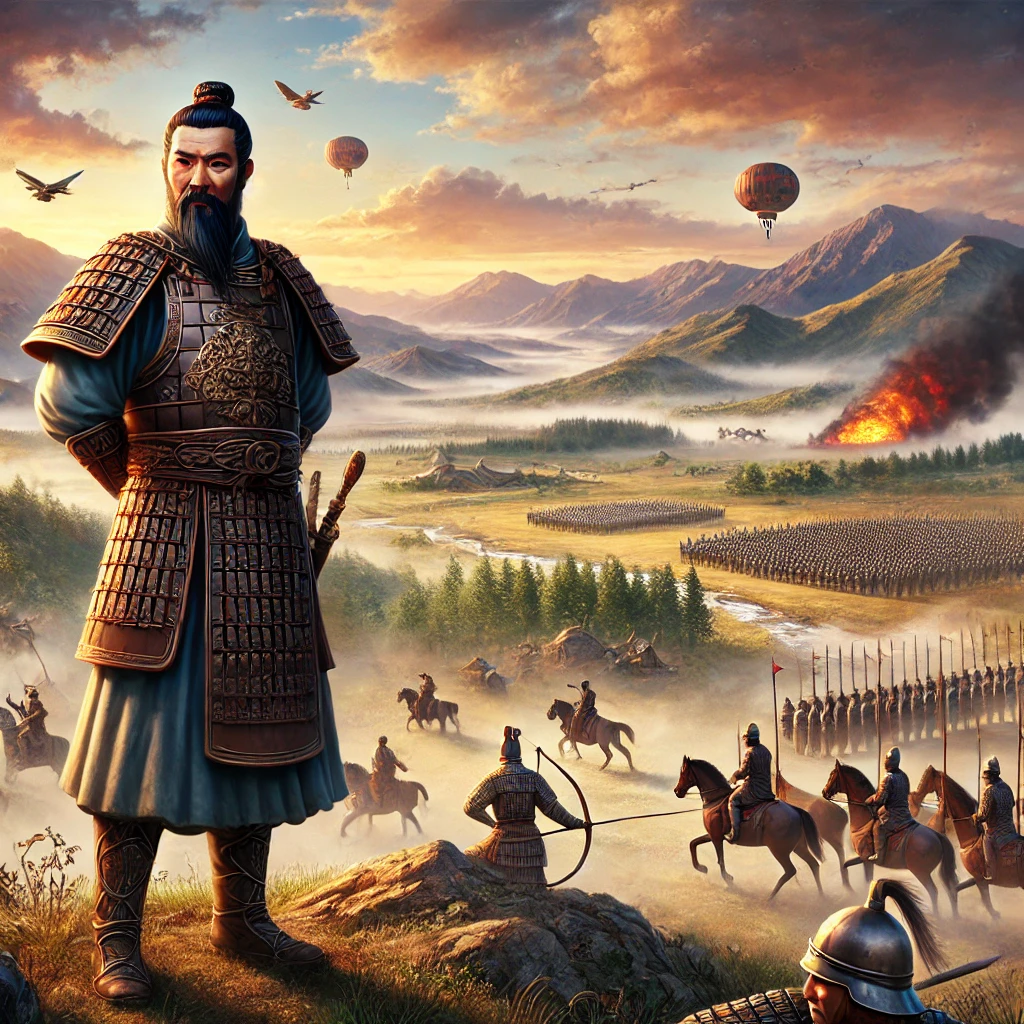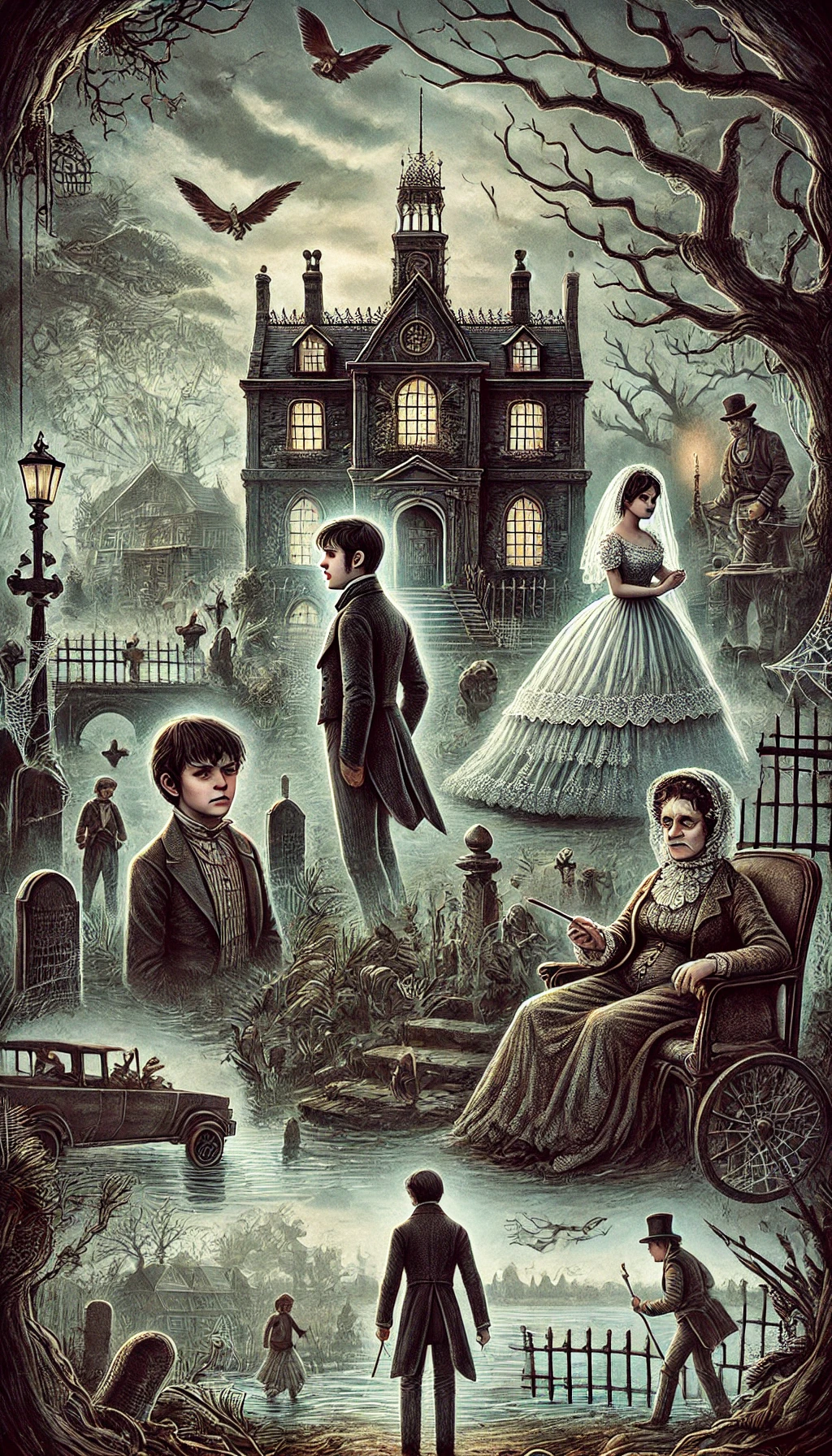Women in Love, written by D.H. Lawrence and published in 1920, is a seminal work in English literature, renowned for its exploration of human relationships, emotions, and the psychological depth of its characters. Set against the backdrop of post-World War I England, the novel continues the story of the Brangwen sisters from Lawrence’s earlier novel, The Rainbow. Through its intense portrayals of love, desire, and personal conflict, Women in Love delves into themes of industrialization, alienation, and the quest for individual identity in a rapidly changing world. The narrative intricately weaves together the lives of the two sisters, Ursula and Gudrun, and their relationships with Rupert Birkin and Gerald Crich, men of contrasting temperaments who challenge the traditional notions of love and connection.
Plot Summary
Ursula and Gudrun Brangwen sat together one morning, their thoughts drifting like the wind over the quiet town of Beldover. The sisters, both in their mid-twenties, were surrounded by the shadows of what could be and what should have been. Ursula, calm and steady, pondered the possibilities of love and marriage, while Gudrun, the more rebellious of the two, spoke of a longing for something deeper, something beyond the provincial life they knew. Gudrun, recently returned from London, had tasted the freedom of the artist’s world, and the idea of settling down seemed both absurd and stifling.
The world around them was changing. In the nearby industrial town, the Crich family reigned over the coal mines, with Gerald Crich, the eldest son, leading the business with a cold and mechanical efficiency. His control over the colliers and his icy command of the world reflected a deep inner turmoil. Gerald’s life was filled with power, yet devoid of emotional connection. His father, Thomas Crich, lay dying, a shadow of the once-powerful patriarch, while his mother, aloof and cold, drifted through the family estate, her eyes vacant with the weight of impending loss.
Rupert Birkin, a school inspector and friend of Gerald, moved through life with philosophical detachment. He was a man in search of meaning, desperate to break free from the traditional constraints of society and love. He and Ursula found themselves drawn to each other, their connection growing deeper as they questioned the very foundations of relationships. Birkin’s thoughts often drifted to a new kind of love, one that transcended the ordinary bonds of marriage — a love that was free, yet profoundly intimate.
As the seasons changed, the lives of these four individuals became increasingly intertwined. Ursula and Birkin’s relationship blossomed, though not without conflict. Birkin, restless and intense, often provoked Ursula with his relentless questioning of life’s purpose. Yet beneath his cold exterior, he longed for the warmth of connection. Ursula, torn between her desire for emotional security and Birkin’s vision of a more spiritual, unshackled love, struggled to find balance. Despite their differences, they found a rare harmony in each other’s company, a companionship that promised freedom from the suffocating expectations of society.
Gudrun, meanwhile, became fascinated by Gerald Crich. There was something magnetic in his coldness, something in his rigid control that both repelled and attracted her. Their encounters crackled with tension, a dance of power and desire. Gerald, who had never allowed himself to be vulnerable, found himself inexplicably drawn to Gudrun’s wild spirit. In her, he saw a reflection of his own hunger for control, but also the possibility of escape from his inner demons. Gudrun, in turn, saw in Gerald a challenge, a man whose power she could neither fully resist nor fully conquer.
As their relationship intensified, so too did the world around them. The Crich family was struck by tragedy when Gerald’s younger sister, Diana, drowned in the lake on their estate. The incident cast a shadow over the already fragile Crich family, driving Gerald deeper into his own darkness. His need for control became more desperate, and his relationship with Gudrun grew increasingly volatile. What began as a passionate connection turned into a struggle for dominance, each pushing the other to the edge of emotional and physical destruction.
The four of them — Ursula, Gudrun, Birkin, and Gerald — sought refuge in the countryside, retreating to the quiet village of Willey Water. There, amidst the beauty of the rolling hills and the serenity of the lake, they hoped to find peace. But the tranquility of the landscape could not soothe the inner turmoil that simmered between them. The tension between Gudrun and Gerald reached a fever pitch. Their love, if it could be called that, was a battleground, each trying to bend the other to their will. Their emotional cruelty escalated, leading to moments of cold brutality that shook Gudrun to her core.
In contrast, Ursula and Birkin’s relationship, though fraught with its own challenges, grew stronger. They found solace in each other’s company, their love built not on dominance or submission, but on mutual understanding and respect. Birkin, once cynical and aloof, began to soften in Ursula’s presence. She, in turn, found strength in his vision of a life beyond the conventional.
As winter set in, the four traveled to the Tyrol in the Austrian Alps. There, amidst the snow-covered mountains, the final act of their intertwined fates played out. Gerald, driven by his need for control, pushed Gudrun further away, his coldness turning to violence. He could not bear the idea that she would never fully submit to him. Gudrun, meanwhile, found herself drawn to Loerke, a sinister and manipulative artist they encountered in the village. Loerke’s cruel intellect intrigued her, and she began to drift away from Gerald, sensing the danger in his emotional instability.
In a moment of pure rage and desperation, Gerald attempted to strangle Gudrun, but her cold defiance stopped him. Defeated and broken, Gerald wandered into the freezing night, climbing higher into the mountains, seeking some form of release from the torment that consumed him. As the cold overtook him, he collapsed in the snow, and death embraced him in the silence of the winter night.
Birkin and Ursula, now faced with the aftermath of Gerald’s death and Gudrun’s emotional withdrawal, contemplated the nature of love and life. Birkin, deeply affected by his friend’s tragic end, questioned whether true connection between people was possible, or whether all relationships were doomed to failure. Ursula, however, held onto the belief that love, though imperfect, was worth the struggle. Together, they returned to England, their future uncertain, but bound by the shared hope that they could create a life of meaning and love, despite the darkness that had touched them.
Main Characters
Ursula Brangwen – The elder of the two Brangwen sisters, Ursula is a schoolteacher who represents a more conventional yearning for love and stability. She is introspective and independent, striving to understand the complexities of love, marriage, and freedom. Her relationship with Rupert Birkin forms one of the central emotional cores of the novel, as she explores the balance between passion and companionship.
Gudrun Brangwen – The younger sister, Gudrun is an artist with a rebellious spirit and a deep desire for autonomy. She embodies a more modern and avant-garde sensibility, having returned to the provincial town from London. Her relationship with Gerald Crich is marked by a dangerous intensity, and her character often reflects Lawrence’s exploration of the darker, more destructive aspects of love and desire.
Rupert Birkin – A school inspector and a close friend of Gerald Crich, Rupert is an intellectual and a thinker who grapples with existential questions about the nature of love, relationships, and the human soul. He rejects the traditional forms of romantic attachment, searching for a deeper, more spiritual connection with Ursula. Rupert serves as a semi-autobiographical figure for Lawrence, embodying many of his philosophical beliefs.
Gerald Crich – The heir to a colliery fortune, Gerald is a powerful, charismatic, and troubled man. His relationship with Gudrun is intense and passionate but ultimately destructive. Gerald’s struggle with power, control, and emotional repression mirrors the larger societal conflicts brought on by industrialization. His inner turmoil and the weight of family tragedy shape his complex character arc.
Hermione Roddice – An aristocratic and intellectual woman, Hermione is Rupert Birkin’s former lover. She represents a cold, controlling aspect of intellectualism and upper-class sensibility. Her strained relationship with Rupert highlights the novel’s tension between emotional freedom and intellectual dominance.
Theme
Love and Relationships: One of the central themes of Women in Love is the exploration of different forms of love and human connection. Through the relationships of Ursula and Rupert, and Gudrun and Gerald, Lawrence investigates the tension between passionate, destructive love and a more balanced, spiritual connection. The novel presents love not as a harmonious union but as something that can be volatile, uncertain, and even dangerous.
Industrialization and Modernity: The novel juxtaposes the industrial world of the Crich family’s coal mines with the natural, instinctual desires of the characters. Gerald’s role as an industrial magnate represents the dehumanizing effects of modern industrial society, while Rupert’s philosophical musings emphasize a yearning for a more organic, life-affirming way of living. This theme explores the alienation that comes with industrial progress.
The Search for Identity: The characters in Women in Love are constantly searching for their true selves. Whether it is Ursula’s quest for emotional fulfillment, Gudrun’s desire for artistic freedom, or Rupert’s philosophical journey toward spiritual love, each character grapples with questions of identity and self-realization. Lawrence portrays this journey as fraught with difficulties and conflicts, particularly in a world where societal norms are rapidly shifting.
Power and Control: The dynamics of power play a significant role in the relationships between the characters. Gudrun and Gerald’s relationship is marked by a constant struggle for dominance, which ultimately leads to destructive consequences. The novel examines how power, both physical and emotional, affects human interactions and how control can corrupt love and connection.
Nature and Instinct: Lawrence frequently contrasts the artificiality of modern civilization with the primal instincts of his characters. Nature is often depicted as a force of purity and vitality, offering a path to true emotional and spiritual freedom. The characters’ interactions with nature often reflect their internal states, as Lawrence uses natural imagery to explore themes of instinct, emotion, and the subconscious.
Writing Style and Tone
D.H. Lawrence’s writing style in Women in Love is dense, introspective, and deeply psychological. He employs a stream-of-consciousness technique to delve into the internal thoughts and emotions of his characters, revealing their anxieties, desires, and fears in rich detail. Lawrence’s prose often oscillates between moments of lyrical beauty and stark, brutal realism, particularly when describing the characters’ emotional and physical conflicts.
His use of vivid, symbolic imagery — such as the recurring motifs of water, fire, and earth — reflects the elemental forces at work within the characters and their relationships. Lawrence’s descriptions of nature are lush and sensuous, often serving as metaphors for the emotional states of his characters. The contrast between the natural world and the industrial landscape reinforces the novel’s thematic exploration of modernity and alienation.
The tone of Women in Love is intense, sometimes dark, and emotionally charged. Lawrence does not shy away from portraying the more disturbing aspects of human nature, such as violence, cruelty, and obsession. The novel’s tone reflects the tension between the desire for freedom and the fear of being consumed by passion or control. At the same time, there is a philosophical undercurrent, as Lawrence grapples with existential questions about life, love, and human fulfillment.
We hope this summary has sparked your interest and would appreciate you following Celsius 233 on social media:
There’s a treasure trove of other fascinating book summaries waiting for you. Check out our collection of stories that inspire, thrill, and provoke thought, just like this one by checking out the Book Shelf or the Library
Remember, while our summaries capture the essence, they can never replace the full experience of reading the book. If this summary intrigued you, consider diving into the complete story – buy the book and immerse yourself in the author’s original work.
If you want to request a book summary, click here.
When Saurabh is not working/watching football/reading books/traveling, you can reach him via Twitter/X, LinkedIn, or Threads
Restart reading!








